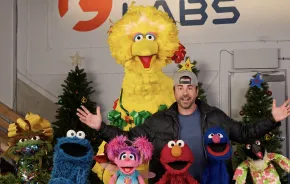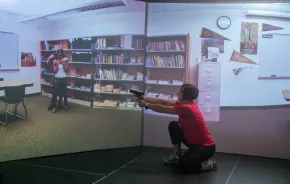
Just after my brain surgeon informed me that the mass he had removed from my brain was a glioblastoma — the actual worst-case scenario that my optimistic nature had not steeled me for — I wailed openly in the halls of the neurosurgery ward.
I cried for days, in fact.
The surgery, my surgeon insisted, was not curative. Glioblastomas have a 100 percent recurrence rate over time, most often within one year of discovery.
At home, I processed that news and felt like the walking dead. I wanted to hide from my children, thinking that I shouldn’t be around them at all if I couldn’t be around them forever.
Then, suddenly, I realized that this behavior was the least helpful I could have. These emotions, while real and honest, were also useless. So, I started to make my plan of what to do about my diagnosis.
My first instinct was to become less available. I wanted to back away from anything that wasn’t here and now, anything that took me away from my kids. (I went so far as wanting to cancel my cell phone and only using a landline. The idea of beaming any kind of signal at my right ear, very near to where my tumor had been, was unsettling anyway.)
I kept the phone but decided to remove myself from social media.
I recognized my need for community, appreciated the immediate presence of an online space and valued social media as a tool to promote my work as a cookbook author but after my diagnosis my standard outlets — Facebook and Instagram — felt cheap. I found myself watching “likes” or getting excited when my high school crush wished me well.
When I paused for a reality check, I was appalled at what I saw in myself. Aside from wasting time that felt even more precious, I didn’t exactly need to be looking at smiling selfies from dream vacation when I had 41 staples in my head and a face so swollen it was unrecognizable.
And so I posted a last message to my friends on Facebook and Instagram and directed them to send me letters to a P.O. box or visit a site that I'd set up with CaringBridge, a website for anyone going through a health crisis. CaringBridge provides a free-form journaling space for updates and an interactive planner to rally and organize help.
Here’s the thing about a diagnosis like mine: People want to give you space but all I wanted was a hug.
Here’s the thing about a diagnosis like mine: People want to give you space but all I wanted was a hug. It was on CaringBridge that I found the support that I’d been missing elsewhere online. It provided me intimacy through writing honestly from my point of view and having it recognized by my community through comments, but I also had the distance and ease of posting online.
I felt as if I was giving my community more, too. This wasn’t just a photo with a caption; it was a long-form essay. By sharing what were basically personal journal entries with everyone I knew, I gave my family and friends a clear image of what I was thinking and feeling in that moment.
It was also a way to answer questions without responding directly the almost constant flow of emails and texts about my health. Plus, because CaringBridge is designed so that a reader can comment but the author can’t respond; in other words, it is designed to pour support into the sick person without expecting reciprocation.
Today, on the other side of a miracle of living past the year they gave me, I remain absent from social media. I’ve even reduced how much I post on CaringBridge.
It’s a little strange as a modern mom, missing the groups I used to belong to that connected me to my neighbors. Now, however, I just walk over to their houses. I greet them in the street, invite them over for dinner. My kids know them as friends and play in their yards.
I don’t think I’ll ever go back, and I don’t think my high school crush cares either way.











